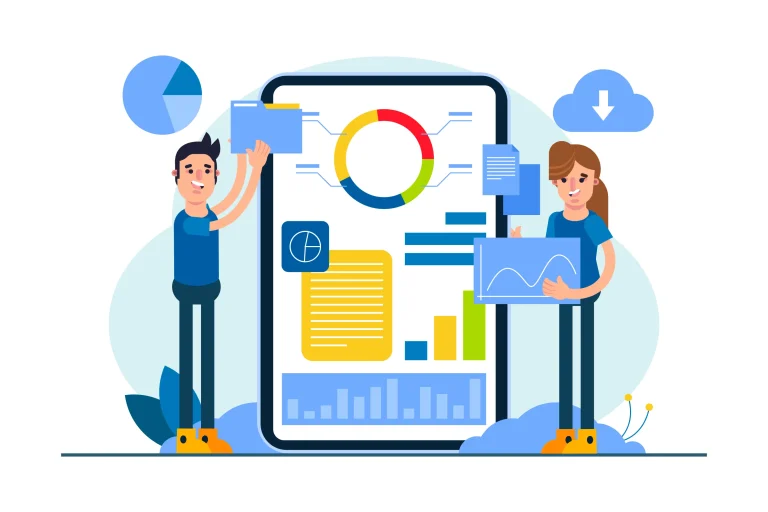Why Page Speed Is a Business Issue, Not Just a Technical One

Introduction
In the digital age, a slow website isn’t just a small annoyance; it’s a serious business liability. Many companies view page speed as something only developers or IT teams should worry about. However, the truth is that page speed influences every aspect of your business, from SEO rankings and user experience to conversions, revenue, and brand perception. At OneData Software Solutions, we view page speed as a strategic lever that businesses must pull to stay competitive.
Below, we explore why page speed matters so much, the real business costs of a slow site, and what you can do to optimize it effectively.
1. What Is Page Speed?
Page speed refers to the speed at which content on your website loads for a user. That includes:
· Time to first byte (TTFB)
· How fast visible elements appear (First Contentful Paint)
· How quickly the entire page becomes usable (Time to Interactive)
These metrics aren’t just technical jargon; they shape how visitors perceive your site.
2. Why Page Speed Affects Business Outcomes
Higher Bounce Rates
A slow-loading website often leads to visitors leaving before they experience your content. Drop-off rates increase as load times stretch. Users expect instant gratification; delay frustrates them.
Lower Search Rankings
Search engines like Google consider page speed as a ranking factor. A slow site can push you down in results, even if your content is great. SEO visibility suffers when speed is neglected.
Decreased Conversion Rates
Even small delays can have significant impacts; studies indicate that every second of delay may decrease conversions. Whether you are selling e-commerce products, gathering leads, or promoting services through contact forms, slow speed undermines your conversion objectives.
Brand Reputation & Trust
Users link slow websites to a lack of professionalism. When your site is sluggish, it can affect how visitors perceive your brand, regardless of the quality of your product. Establishing trust becomes challenging when your site does not perform well.
Operational Costs and Efficiency
Slow websites require more support, leading to user complaints. As a result, support tickets increase, and marketing efforts, such as ads and PPC, become less effective because potential customers may leave before they even arrive. These inefficiencies waste both budget and talent.
3. Page Speed Impacts Across Industries
- E-commerce: Slow pages can directly cost sales, abandoned carts, and dropped checkout processes.
- Lead generation / B2B: Delay in lead capture reduces pipeline growth.
- Software / SaaS: Users expect fast-loading dashboards; delay harms perceived product quality.
- Healthcare / HealthTech: Slow speed might impact patients accessing critical content or booking appointments where trust and responsiveness matter most.
4. What Causes Slow Page Speed?
Understanding root causes helps you fix them. Common factors include:
- Large, unoptimized images and videos
- Overuse of third-party scripts (tracking, pop-ups, etc.)
- Poor server response times
- Lack of caching or inefficient caching strategies
- Bloated front-end code (CSS, JS) that isn’t minified
- Not using content delivery networks (CDNs), especially for geographically dispersed audiences
5. How Page Speed Translates into Business Value
Here are ways improving page speed can directly impact business metrics:
Business Area | Impact of Faster Page Load |
SEO & Organic Traffic | Better rankings → more high-quality traffic |
Conversion & Revenues | More leads/sales from existing traffic |
Customer Retention | Reduces frustration → increases repeat visits/users |
Ad Spend ROI | More of your paid traffic converts, lowering cost per acquisition |
Brand Perception & Trust | Professional, reliable experience improves reputation |
6. How to Improve Page Speed (and Who Helps)
Here are practical steps, many of which OneData Software Solutions implements for clients:
- Audit your site using tools like Google PageSpeed Insights, Lighthouse, WebPageTest
- Optimize images and media (compression, correct formats like WebP)
- Minify CSS/JS and remove unnecessary code/scripts
- Implement caching mechanisms at the browser and server levels
- Use CDNs to serve content closer to users geographically
- Lazy load content (images/videos below the fold)
- Choose high-performance hosting or cloud infrastructure
- Regularly monitor, test, and iterate based on real user data
7. Page Speed & OneData Software Solutions’ Holistic Approach
At OneData, we treat page speed as a core business metric, not an afterthought. Our approach includes:
- Applying speed optimization practices during site development
- Ensuring website development includes performance audits
- Balancing design, UX, and visual impact with load times
- Using cloud infrastructure and modern frameworks that support fast delivery
- Monitoring performance post-launch and updating as needed
8. Conclusion
Page speed isn’t a detail; it’s a business lever. When you ignore it, you hurt SEO, lose potential customers, and reduce trust. When you invest in speed, you create better UX, higher conversions, and strengthen your brand. For any business serious about its online presence, page speed is a must-have, not a nice-to-have.
Your website should work harder, faster, and smarter. Because online, every second counts.
FAQ
1. How fast should a website load to be considered good?
Aim for under 3 seconds for full page load on desktop, and even quicker on mobile. Measurements like First Contentful Paint under 1-2 seconds indicate strong performance.
2. Does page speed really impact SEO rankings?
Yes. Google considers page speed and Core Web Vitals as part of its ranking factors. Websites that load faster generally have better visibility in search results.
3. How much revenue do I lose with a slow website?
It depends on traffic volume, but even small delays (1-2 seconds) can reduce conversion rates by 10-20%, meaning significant revenue losses over time.
4. Can design and aesthetics be preserved while improving page speed?
Because we cover everything from visuals to backend systems so your website not only works well, but also truly represents what your business stands for.
5. How do businesses monitor page speed continuously?
Use tools like Google PageSpeed Insights, Lighthouse, WebPageTest, and real user monitoring (RUM). Set up performance dashboards, alert, and conduct regular audits.
Table of content
- Introduction
- What Is Page Speed?
- Why Page Speed Affects Business Outcomes
- Page Speed Impacts Across Industries
- What Causes Slow Page Speed?
- How Page Speed Translates into Business Value
- How to Improve Page Speed (and Who Helps)
- Page Speed & OneData Software Solutions’ Holistic Approach
- Conclusion
- FAQ









